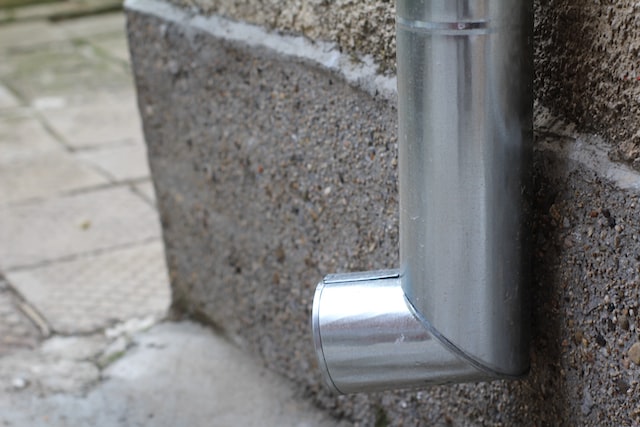Choosing the correct sized gutter for your home can be tricky, especially if you have a roof with multiple faces.
We’ve put together some handy tips to help you measure your roof and select the perfect gutter size.
What are gutters?
Gutters are troughs installed along a roof to catch and guide rainwater away from the building.
Downspouts are fitted along the trough: they provide a route for the collected water to flow downwards into the main drainage system underground.
Without an effective gutter system, rainwater would simply fall down the roof to the ground below, potentially causing flooding if the ground can’t absorb the water quick enough.
Guttering comes in a range of materials including cast iron, plastic[PD1] (PVC and PE), concrete and steel – although plastic and PVC is the most common material used.
Why do I need guttering?
Rainwater can cause significant amounts of damage to property. Without an efficient drainage system, water can cause the following issues:
Cellar/basement flooding
During flash floods, if too much water pools on the ground rather than flowing down our drains, it can often find its way down into basements through windows and cracks in foundations.
Foundation damage
Similarly, pooled water may seep below our homes and erode its foundations, gradually causing structural damage. The average cost in the UK for foundation repair is £8,500, a big figure for a problem that could’ve been avoided.
Rot
Wet masonry caused by heavy rainfall and moisture can cause rot in timber surfaces or wooden window frames. Rot damages wood, causing risks to the structure of your property.
Interior wall and ceiling damage
heavy rain that isn’t diverted away from our homes can cause water damage, which ruins our walls and let’s be honest, is an eyesore too.
Moisture trapped in windows
Moisture that collects in our homes can condense in our windows that are a cold surface, causing condensation that’s difficult to treat.
What can happen if you don’t select the correct gutters?
Both oversizing and under sizing your gutters can be problematic in the long run.
Installing guttering that is too narrow for your roof size and style will be less effective at draining water from your property.
Small guttering on a large roof is more likely to block easily, overflow and even fail to catch rainwater. This would be a pointless installation and a waste of your time and money.
Gutter systems that are too large for a property also have disadvantages. If the gutters you install are too wide, they can upset the appearance of your home – a small new build with gutters meant for steep angled roofs wouldn’t look great.
As most proud homeowners care about how their property looks, we don’t recommend using wide gutters for properties that don’t need them.
Bigger gutters will also cost more. So, why pay more for something you don’t need?
Tips for choosing the right gutter size;
When it comes to finding the right gutter size for your property, you need to calculate the surface area of your roof and height to get the effective roof area.
There are a few shortcuts, however they won’t guarantee an accurate measurement.
- Workout your roof type
To find how many individual surface areas on your roof that you will need to calculate, determine the style of your roof.
For example, an open gable roof has two simple sides, so only two surface areas need to be measured and added together.
However, your roof style may be more complicated with more surfaces.
If this is the case, you will benefit from drawing up a plan of your roof, so you know where to measure before you get up there.
If you’re struggling with this, it may be more beneficial to call a professional for help.
- Measure the surface area of your roof rather than your home
A common short cut for working out the surface area of a roof is to simply do it from the ground.
This will give a there or abouts estimate, but it’s not exact.
So, get up your ladders and measure the surface area of your roof with a tape measure.
Try to do this in metres to make the effective roof area calculation simpler.
Use your plan from the previous step to start measuring your roof surface area.
- Measure the pitch (height) of your roof
The pitch of your roof is simply the angle of the slope created by the rafter.
Unless you’re a builder you’ve probably never thought about measuring your roof’s pitch (or know where to start).
But if you’re installing a drain, it’s something you’ll need to know, because the steeper the roof, the more rainwater it’ll catch and the more work your drain will need to do.
You can use Omni’s helpful Roof Pitch Calculator to work out the pitch of your roof.
- Choose the style of gutters for your home
Guttering comes in a variety of designs and materials to fit your desired look and needs.
The most popular materials include plastic, steel, and cast iron. Plastic is a common choice as it resists corrosion and is easy to install.
The standard gutter styles and widths in the UK are as followed:
Standard UK gutter sizes
Our top tips for choosing the correct-sized guttering for your property will help you to measure your roof easily and accurately.

